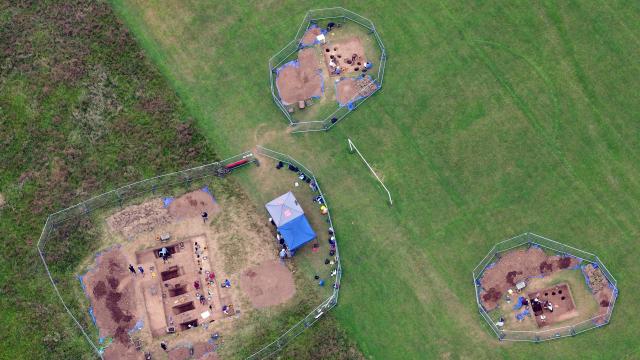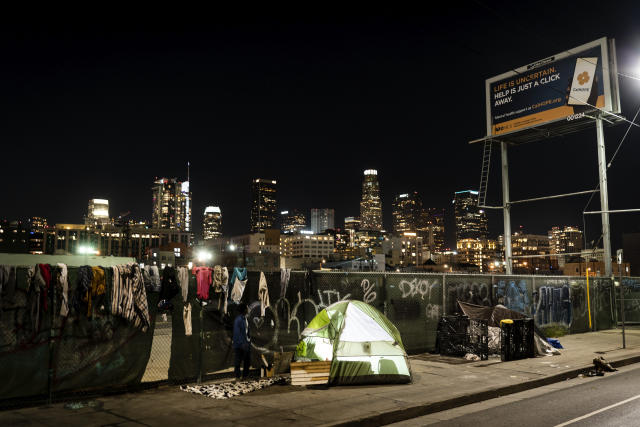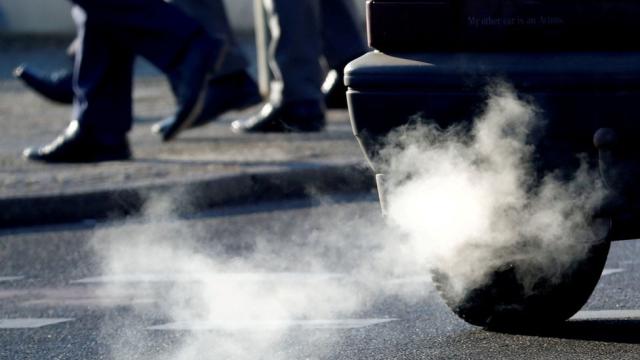Science Daily News | 21 Jun 2023

Views (125)

Dig resumes at house thought to be city's oldest
Last year's dig at the same park uncovered a claypot dating back to the Bronze Age.

An archaeological dig which uncovered what is believed to be the earliest house in Cardiff has resumed in a city park.
A heritage project is digging at Trelai Park near Caerau Hillfort, a site of national significance.
Last year’s initial dig revealed that the roundhouse, near Cardiff West Community High School, dates back to about 1,500 BC.
The latest excavations will focus on the floor of the roundhouse, which has remained largely intact beneath the park’s playing fields for 3,500 years.
Prior to the last dig, experts were hoping it would reveal what happened to people once they had moved on from the Hillfort, between the late Iron Age and early Roman period.
Caerau and Ely Rediscovering (CAER) Heritage Project co-director Dr Oliver Davis said: "We're opening up further what we believe could be the earliest house discovered in Cardiff.
"The dig last year showed us that the floor of the roundhouse is remarkably well-preserved, giving us the chance to examine the surface that people were walking on 3,500 years ago."
Michelle Powell of Action in Caerau and Ely said the digs brought "local people together to discover our incredible heritage".
Scott Bees, 34, is a first year student on the BA ancient history and archaeology course.
A dad to five daughters aged six to 15, who lives with his family in Ely, he said: "My wife decided to go back to college a year before me and she persuaded me to do the same. I wanted to show my kids that you can always go for your dreams."
Regular volunteer Jacque Young, who has lived in Caerau for more than 50 years, said: "I've loved getting involved. It's exciting thinking this can be found on your own doorstep."
Students from Years 7 and 8 at Cardiff West Community High School will also take part in the dig.
Head teacher Martin Hulland said: "Our students are proud to be involved once again in uncovering the rich heritage of their area.”
The dig will go on until 7 July, with an open day on 24 June.
New study says high housing costs, low income push Californians into homelessness
Homeless people in California are already a vulnerable group, often struggling with poor health, trauma and deep poverty before they lose their housing, according to a new study on adult homelessness. The study released Tuesday by the University of California, San Francisco attempts to capture a comprehensive picture of how people become homeless in California, and what impeded their efforts at finding permanent housing. The representative survey of nearly 3,200 homeless people found that when they lost housing, their median household income was $960 a month, and for renters on leases it was $1,400 a month, of which on average half went to rent.

SAN FRANCISCO (AP) — Homeless people in California are already a vulnerable group, often struggling with poor health, trauma and deep poverty before they lose their housing, according to a new study on adult homelessness.
The study released Tuesday by the University of California, San Francisco attempts to capture a comprehensive picture of how people become homeless in California, and what impeded their efforts at finding permanent housing. The representative survey of nearly 3,200 homeless people found that when they lost housing, their median household income was $960 a month, and for renters on leases it was $1,400 a month, of which on average half went to rent.
“People are homeless because their rent is too high. And their options are too few. And they have no cushion,” said Dr. Margot Kushel, the initiative director and lead investigator. “And it really makes you wonder how different things would look if we could solve that underlying problem.”
Homelessness is a national crisis, and all too pervasive in California, where an estimated 171,000 people — or 30% of all homeless people in the U.S. — are homeless. Political leaders are divided over how to address the crisis, with some, including Democratic Gov. Gavin Newsom, favoring tent encampment sweeps and a tough-love approach toward those with mental health and addiction issues.
Dr. Mark Ghaly, secretary of the state’s health and human services agency, said he hopes the expansion will fill a critical need in services.
But Dr. Kushel, the study’s lead investigator, said most people who are homeless and struggling with behavioral health impairments do not require intensive, in-patient treatment. Rather, she said, they need housing paired with “really robust services” and she hopes the state gets the balance right.
“The root of the problem is housing, and if we want people to recover, to heal, it’s really impossible to do that when they’re homeless,” she said.
Newsom's plan must first pass the state Legislature this year. If it does, it would go to voters in March 2024.
Of those surveyed, 45% reported current, regular use of cocaine, amphetamines and opioids, or heavy episodic drinking. Some participants described how heavy substance use contributed to losing their homes, while others attributed their ability to stay alert and to protect themselves from assault or theft to methamphetamine usage.
Kushel's team surveyed nearly 3,200 adults around California, and followed up to conduct in-depth interviews with 365 people, between October 2021 and November 2022.
The study found that Black people made up 26% of the homeless population in a state where they are only 6% of the general population. About 90% of participants were living in California when they became homeless. Half reported an inability to work due to age, health or disability. The median length of homelessness was a little under two years.
More than a third of adults surveyed met the criteria for chronic homelessness, meaning they had a disabling condition and were homeless for at least 1 year — or were homeless four times in the previous three years totaling more than 12 months.
In Los Angeles in 2015, Sage Johnson's mother was evicted from their apartment when she was unable to meet rent that had increased to $1,200. In disability pay, she received about $1,340 a month. She bounced around, from LA's notorious Skid Row to various convalescent homes while her daughter lived at a shelter.
Later, Johnson, 28, was able to place her mother in a home, where she stayed for about two years. In 2018 though, her mother died from a debilitating stroke. Johnson, who now has stable housing, wishes she could have done more.
“But in the end, she did have a bed. She was inside. She didn’t have any more strokes outside. And she was able to regenerate and rejuvenate and restore some of her life while in the convalescent home,” said Johnson, a co-chair for one of the study's advisory boards.
Nearly half of the adults surveyed were not on a lease in the six months prior to becoming homeless, and had likely moved in with family or friends, contributing to rent when they could. Nearly a quarter cited conflict among housemates, desire for more space or not wanting to impose any longer on family and friends as primary reasons they left.
On average, people surveyed who were not on leases received only one day of warning before needing to move out.
Among people on rental lease agreements, more than 20% cited income loss or reduction as the primary reason they lost housing. “So it wasn’t so much that their housing costs increased, it’s that they could no longer keep up with it,” said Kushel.
California ranks as the most unaffordable state when it comes to housing, according to an annual report by the National Low Income Housing Coalition. A person earning an hourly minimum wage of $15.50 would have to work nearly 90 hours a week to afford the statewide average for a modest one-bedroom rental, which is nearly $1,800 a month, the coalition states.
The study was requested by Newsom's administration, but the state did not fund it so didn't play a role in analyzing data or interpreting the findings.
The report makes many recommendations, including expansion of rental assistance and cash assistance to struggling households, as well as pilot programs to facilitate shared housing.
Cosmic-ray 'GPS' system that tracks underground movement could change the way we respond to disasters
A new system that uses subatomic particles produced high in Earth's atmosphere could provide a view inside volcanoes and help locate people trapped beneath rubble.

The new positioning system, named the muometric wireless navigation system (MuWNS), scans for ghostly and ultrafast subatomic particles called muons to triangulate the position of a receiver buried deep beneath the ground.
A previous version of MuWNS, called the muometric positioning system (muPS), was created by the researchers to detect seafloor changes caused by tectonic or volcanic activity. Much like GPS triangulates with satellites in the sky, muPS consisted of four surface-level reference stations through which muons would pass before arriving at a receiver station on the ocean floor.
To take into account the travel time of the muons between the reference stations and the receiver, the researchers connected the five detectors with wires so they could communicate the time difference between them.
To move away from cumbersome wires, the researchers came up with a new solution for the time lag using high-precision quartz clocks, synchronizing the reference stations to the receiver with GPS before it was taken underground.
Related stories:
"The receiver detector and the reference detectors are connected to GPS first to synchronize," Tanaka said. "These detectors are eventually separated from GPS for navigation. Each detector is equipped with a precise local clock — in this case, an oven controlled crystal oscillator — which doesn't drift so widely within a short [period of time]. Therefore, these are practically synchronized for a while."
Then, to test their system's ability to triangulate, the researchers placed four reference detectors on the sixth floor of a building and gave a receiver detector to an individual in the building's basement. By scanning for the cosmic rays picked up by the detectors and the receiver, the researchers reconstructed the route the basement navigator had walked.
With the new technology successfully demonstrated, the next steps will be to streamline it so that it can be incorporated into smartphones.
"The receiver's detector size will be a chip scale," Tanaka said. "We don't need precise time synchronization either; hence the atomic clock is not needed anymore. Therefore, it is definitely possible to fit [in] smartphones."
Libra Group embarks on space leasing with Arctic ground station
Libra Group said it aims to become the world's first space leasing company offering satellites, space ports and other infrastructure, and is setting up a ground station in the Alaskan Arctic, vital for polar orbits that monitor climate change. "There is no space leasing company," George Logothetis, the executive chairman of Libra, an international business group active in 60 countries and commercial sectors including aerospace, shipping, renewable energy, hospitality and real estate, told Reuters. Libra, which is privately owned by the Logothetis family, has set up Space Leasing International (SLI), which will own and lease assets critical to the space economy.

By Jonathan Saul
LONDON (Reuters) - Libra Group said it aims to become the world's first space leasing company offering satellites, space ports and other infrastructure, and is setting up a ground station in the Alaskan Arctic, vital for polar orbits that monitor climate change.
"There is no space leasing company," George Logothetis, the executive chairman of Libra, an international business group active in 60 countries and commercial sectors including aerospace, shipping, renewable energy, hospitality and real estate, told Reuters.
"It's a completely unique concept and we preserve our first mover advantage. Sooner or later someone is going to do it."
The roughly $350 billion global space industry is poised for rapid growth and could surge to over $1 trillion by 2040, according to Morgan Stanley estimates. There is still limited infrastructure in place and the costs are massive.
Libra, which is privately owned by the Logothetis family, has set up Space Leasing International (SLI), which will own and lease assets critical to the space economy.
As part of its investments in assets that will be leased to U.S. satellite company RBC Signals, SLI will set up a ground station in the Alaskan Arctic, expected to be operational in two months.
It also plans a further 20 ground stations, including in the Southern Hemisphere, to be built and owned by SLI over the next three years and operated by RBC Signals.
"We want to be at the cutting edge of innovation," Logothetis added.
Libra, which was founded in 2003, has completed over $15 billion of transport transactions through its aviation and maritime businesses and is a leading player in aviation leasing via its LCI subsidiary.
Logothetis, who hosted one of the first fund raising events for U.S. President Joe Biden's re-election campaign in May, said Libra "took the biggest bet in shipping history" when it acquired 136 ships between 2009 and 2020, including 96 container vessels through its Lomar subsidiary.
Around 60 ships were sold during the container shipping boom between 2020-2023 with sale proceeds approaching $2 billion, Libra said. Lomar's diversified, core fleet includes approximately 40 vessels.
(Reporting by Jonathan Saul; Editing by Alexandra Hudson)
NI Greenhouse gas emissions increased by 5% in 2021, report finds
Emissions in most sectors, including transport, agriculture and energy supply rose in 2021.

Greenhouse gas emissions in Northern Ireland have increased, a new Stormont report has said.
However longer-term trends continued to show a decrease of about 23% in emissions compared to 1990.
The largest increases were in transport, agriculture and energy supply.
Waste management and public sector buildings were the only two sectors which did not have an emissions increase.
Northern Ireland has a target of reducing emissions by at least 48% by 2030.
Director of RenewableNI Steven Agnew described the report's findings were disappointing.
"With the impact of climate change already being felt in Northern Ireland, we cannot afford to go backwards," he said.
He called for rapid reform to allow electricity projects to reduce emissions from a number of sectors.
"If you want to decarbonise something, the fastest way to do that is to put a plug on it," he continued.
"The Climate Act set the target of 80% renewable electricity generation by 2030.
"This will reduce electricity emissions by 75% from where they are today.
"In addition, by electrifying heat and transport we can also reduce the climate impact of those sectors."
Mr Agnew said RenewableNI members had enough projects in development to achieve a zero carbon electricity system by 2035.
"Unfortunately, it's typically taking between two and five years to get planning permission for large scale renewable projects. This is driving investment elsewhere.
"The ability to dramatically decrease Northern Ireland's greenhouse gas emissions, and to improve energy costs for consumers, is being held back by the slow pace of policy change."
Northern Ireland contributed 5.3% of all UK greenhouse gas emissions in 2021, which stood at 426.5 MtCO2e.
In the UK there has been an almost 48% emissions reduction between 1990 and 2021.
During the same period, the reduction in emissions in Northern Ireland was 23.2%, compared to 50.2% in England, 49.3% in Scotland and 35.0% in Wales.
Daytime naps may be good for our brains, study says
Taking daytime naps may help maintain brain health as we age, according to a new study. However, prior research has shown that excess napping can also be harmful.

On average, the difference in brain volume between nappers and non-nappers was equivalent to 2.5 to 6.5 years of aging, researchers said.
“Our findings suggest that, for some people, short daytime naps may be a part of the puzzle that could help preserve the health of the brain as we get older,” said senior author Victoria Garfield, a senior research fellow at UCL, in a statement.
While the study was “well-conducted,” limitations include the fact that napping habits were self-reported, said Tara Spires-Jones, president of the British Neuroscience Association and deputy director of the Centre for Discovery Brain Sciences at the University of Edinburgh, who was not involved in the study.
The results show “a small but significant increase in brain volume in people who have a genetic signature associated with taking daytime naps,” she told the Science Media Centre.
“Even with those limitations, this study is interesting because it adds to the data indicating that sleep is important for brain health,” she said.
In response, lead study author Valentina Paz, a researcher at the University of the Republic of Uruguay and UCL, told CNN that she agreed “the work has some limitations,” but they’re “confident” in the method used in the study.
Mendelian randomization is a statistical approach that uses genetics to provide information about the relationship between an exposure and outcome.
Researchers looked at sections of genetic code linked to people’s likelihood of regular napping and then compared brain health and cognition results between those with the napping genes and those without.
“By looking at genes set at birth, Mendelian randomisation avoids confounding factors occurring throughout life that may influence associations between napping and health outcomes,” said lead author Paz in the statement.
The study looked at more than 35,000 people aged 40-69. - MoMo Productions/Digital Vision/Getty Images
However, such a technique can only show an association between nap and brain health, not cause and effect. In addition, researchers did not have information on nap duration, which can impact whether sleep is helpful or harmful.
Paz told CNN that previous findings suggest that “taking a short nap (5 to 15 minutes) in the early afternoon may benefit those needing it.”
Meanwhile, previous research has shown that frequent napping or regularly napping for extended periods during the day may be a sign of early dementia in older adults.
Study participants who typically napped during the day were 12% more likely to develop high blood pressure over time and were 24% more likely to have a stroke compared with people who never napped.
“This may be because, although taking a nap itself is not harmful, many people who take naps may do so because of poor sleep at night. Poor sleep at night is associated with poorer health, and naps are not enough to make up for that,” said clinical psychologist Michael Grandner in a statement at the time. Grandner directs the Behavioral Sleep Medicine Clinic at the Banner-University Medical Center in Tucson, Arizona, and was not involved in the study.
“Sleep disorders are linked to an increase in stress and weight regulation hormones which can lead to obesity, high blood pressure, type 2 diabetes – all risk factors for heart disease,” he said. “I do believe napping is a warning sign of an underlying sleep disorder in certain individuals.”
0 Likes
